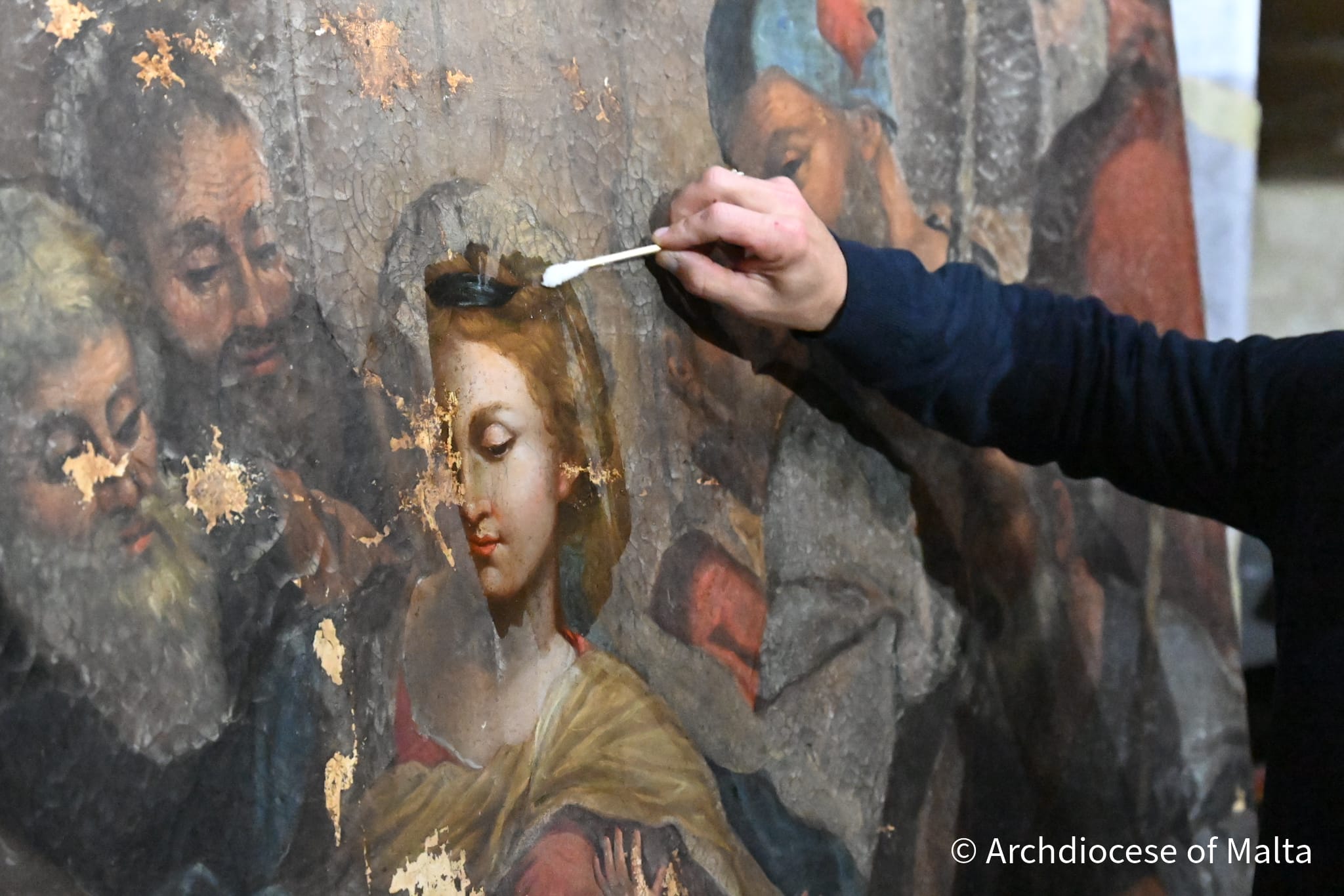
Archbishop Charles Scicluna visited the Jesuit Church in Valletta, where extensive restoration and conservation work is currently underway.
He was accompanied by Mr Michael Pace Ross, the Administrative Secretary of the Archdiocese of Malta, and Rev. Dr Nicholas Doublet, the President of the Jesuit Church Foundation.
During the visit, the Archbishop thanked everyone who has contributed or is contributing to ensuring that this heritage continues to serve society and aids in the search for truth and beauty. He also mentioned how, through this conservation project, various entities and companies came together for a common purpose.
Over the past four years, extensive conservation efforts have restored the Church’s external facades, sacristy, and the Oratories of the Onorati and the Immaculate Conception. This work included structural rehabilitation, cleaning of historic walls and ceilings, and restoration of masonry, sculptures, and rare timber gabled roofs. Marble floors, altars, cabinetry, and a historic lavabo were also restored, while roofs were made watertight, and timber beams preserved.
Specialists, including AX Construction and Atelier del Restauro, collaborated under the direction of the Foundation and Pro-Rector Rev. Dr Nicholas Doublet. Paintings, such as those by Filippino Dingli and Stefano Erardi, underwent preventive conservation and were stored for further treatment, supported by ERDF Cultural Valorisation Funding and the Archdiocese of Malta.
The project also included the replacement of outdated services, the introduction of fire and security detection systems, as well as the installation of a new illumination system that would enhance appreciation of the artistic collection housed within these spaces. Scientific analysis revealed and restored the original decorative blue scheme in the Oratory of the Immaculate Conception, while artefacts like the silver gilt Apostolato were conserved with APS Bank Malta funding. Upon completion of the works in the Oratories, all the paintings, could be re-hung for public appreciation.
With the sacristy and oratories restored, focus now shifts to the structural conservation of the main church, including the chancel, nave, transepts, belfries, and eight side chapels. These efforts aim to protect the exquisite liturgical and ecclesiastical artefacts housed within. Current works involve the conservation of the church’s roofs and the dome, which is at an advanced stage.
History
Built between 1593 and 1609 by the Society of Jesus (Jesuits), the Jesuits’ Church, dedicated to the Circumcision of Our Lord, was remodelled in the Baroque style after sustaining damage in an explosion in 1634. The church’s interior houses masterpieces from renowned Neapolitan, Tuscan, Flemish, and Maltese artists, embellished with paintings by the foremost artists of the time, namely The Circumcision of the Lord by Filippo Paladini (1544-1614), and The Return from the Flight to Egypt by Battistello Caracciolo (1578-1635), amongst others. The Jesuits’ Church presents an array of artistic schools from late sixteenth-century Mannerist art to Caravaggist art to the High Baroque. For this reason, it is considered to equate with St John’s Conventual church in terms of the quality of its paintings.
Launched in 2021, the restoration of the Jesuits’ Church focused on preserving its art and revitalising its structural integrity. The Jesuits’ Church Foundation has spearheaded efforts to conserve the church and its adjoining oratories in collaboration with the Restoration Directorate. Through this agreement between Church and State, the Foundation is committed to the long-term preservation, accessibility and safeguarding of this important artistic and religious heritage site, that has stood as a beacon of faith guiding Europe for centuries.
Today, the Jesuits’ Church continues to serve as an active place of worship and a religious heritage monument. It is a symbol of Malta’s rich cultural heritage that welcomes visitors to admire its artistic splendour and participate in its rich cultural programme. The project has been at the forefront of cultural preservation in Malta, aiming to ensure that this sacred space continues to inspire future generations.










